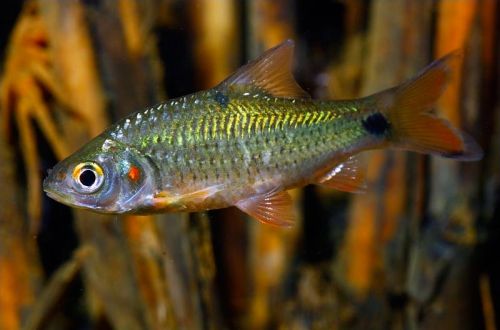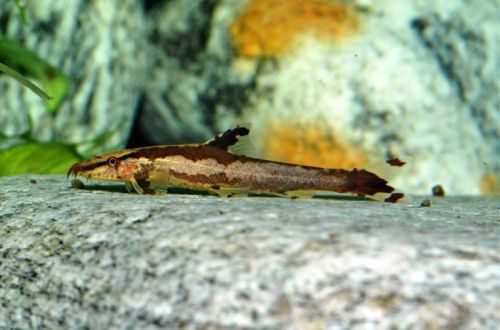
Distichodus Lusosso
Distichodus Lusosso, scientific name Distichodus lusosso, belongs to the family Distichodontidae (Distichodontidae). The fish comes from equatorial Africa from the territory of Cameroon, the Republic of the Congo and the Democratic Republic of the Congo. It inhabits large river systems, occurs in the main channels of rivers, preferring areas with an abundance of aquatic vegetation.

Description
At a young age, it resembles a long-nosed distychodus with a bright red-orange coloration and black stripes. The two species differ in the number of stripes, Distichodus Lusosso has 7-8 stripes, while its relative has only 6. As they mature, the coloration fades and adult fish become less colorful with a predominant gray or greenish-brown color.
Behavior and Compatibility
Reaching a fairly large size, adults are a danger to smaller neighbors in the aquarium. Behavior in aquariums can be called unpredictable. In nature, Distichodus often live in large groups, but in confined spaces, they sometimes begin to show aggression towards each other. For this reason, it is recommended to keep only one representative of this species in a small tank, together with several large catfish, African characins and others.
Brief information:
- The volume of the aquarium – from 250 liters.
- Temperature – 22-26°C
- Value pH — 6.5–7.5
- Water hardness – 2–20 dH
- Substrate type – any
- Lighting – subdued, moderate
- Brackish water – no
- Water movement – moderate
- The size of the fish is up to 38 cm.
- Nutrition – plant-based feed
- Temperament – conditionally peaceful
- Keeping alone or in a group of individuals
Maintenance and care, arrangement of aquariums
For one Distichodus Lusosso, an aquarium of 250-300 liters is recommended. Arrangement is optional. It will look most natural against the background of a rocky or sandy substrate among snags and thickets of plants. As the latter, it is worth choosing hardy, unpretentious species, such as Anubias, Bolbitis ferns, Thailand ferns and others. Any plants with soft tender leaves are likely to be damaged or eaten.
The maintenance is simple if the necessary hydrochemical composition of the water is maintained and regular maintenance of the aquarium is carried out. The ability to live in a fairly wide range of pH and dGH values significantly reduces the complexity of the water treatment process.
Food
An omnivorous species, will accept most popular dry, frozen and live foods. In the diet, it is important to provide a large number of plant components. It is acceptable to serve blanched spinach, lettuce, etc.





